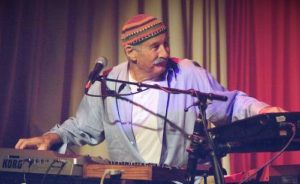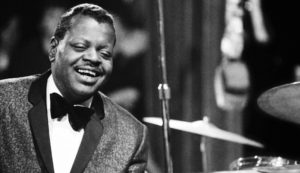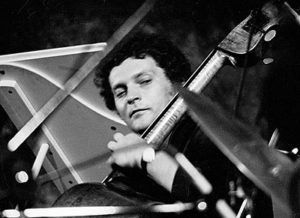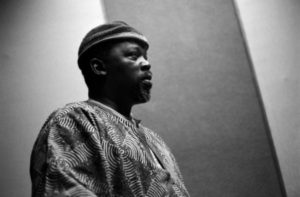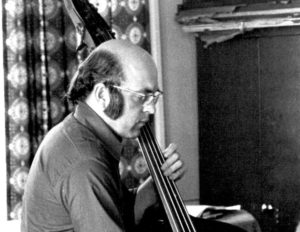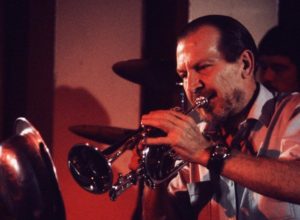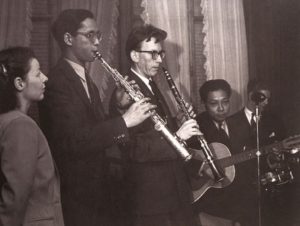Mario Bauzá
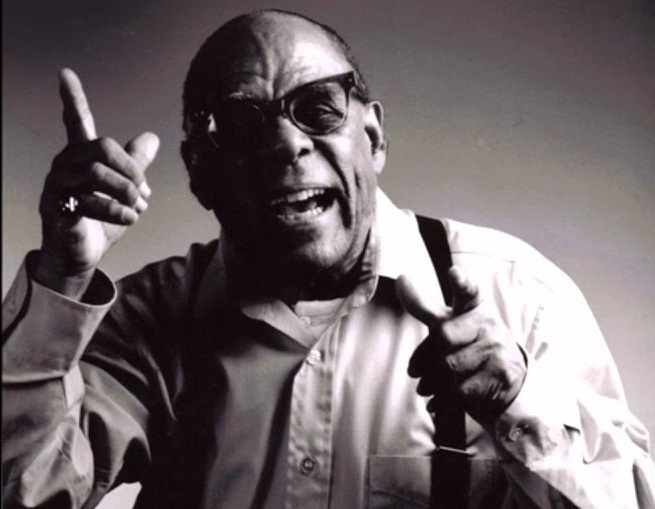
As musical director of Machito and the Afro-Cubans, Mario Bauzá (1911-1993) was instrumental in founding Afro-Cuban jazz. He was born in Havana and learned the clarinet from a young age. Prodigiously talented, he attended the Havana Conservatory while still a child, and subsequently joined the Havana Philharmonic Orchestra, on clarinet and bass-clarinet, aged 11. At 15 years old Bauzá was playing in the charanga ensemble of popular bandleader Antonio Maria Romeu, whose orchestra had been running since 1910, and which specialised in danzón. The band travelled to New York for a recording session in 1926, and Bauzá had the chance to hear the Paul Whiteman Orchestra. Enamoured by the playing of Frank Trumbauer, he took up the saxophone on returning to Havana.
Desperate to return to USA to play the music he had fallen in love with, he had to wait until he was 18 to obtain a passport. He arrived back in New York City in 1930, struggling to find work until he had been in USA long enough to join the Musician’s Union. His first professional work in an American band was with Noble Sissle‘s orchestra. Though he felt the music was too commercial, it gave Bauzá the chane of playing alongside top players like Sidney Bechet and Tommy Ladnier. He learned to play trumpet in two weeks in order to play a recording session for Cuban singer Antonio Machin, and he quickly became good enough to join Chick Webb‘s band at the Savoy Ballroom. He stayed with the drummer for seven years, becoming lead trumpet and musical director. During this time, he lobbied for the teenage Ella Fitzgerald to join the band, which she did in 1935. In 1938, Bauzá joined Cab Calloway, and helped get Dizzy Gillespie into the band. By this time his brother-in-law Frank Grillo, also known as Machito, had arrived in New York, and in 1940 Bauzá left Calloway to become musical director for Machito and the Afro-Cubans.
As arranger for the band, he developed ways of combining Cuban rhythms with jazz, and a new genre was born. The band became hugely popular withholding a three year residency at the La Conga Club on 51st Street. Jazz impresario Norman Granz, a fan of the band, arranged for them to record with Charlie Parker in 1948 and 1949, the results ending up on the album South of the Border. In 1947, Bauzá had contributed indirectly to further developments in Latin Jazz by encouraging Cuban percussionist Chano Pozo to move to New York, and then introducing him to Dizzy Gillespie. Pozo helped change the direction of Gillespie’s band towards the Afro-Cuban style, and co-wrote ‘Manteca’, ‘Cubana Be, Cubana Bop’ and ‘Tin Tin Deo’ before being shot and killed in Harlem a year into their collaboration.
Bauzá remained director of the Afro-Cubans until 1976. By the 1980s he was largely forgotten, except when influential musical friends arranged for special tribute concerts, like that in 1990 to celebrate his 80th birthday (a little prematurely as it turned out). Special guests at this Symphony Space concert included Dizzy Gillespie, Chico O’Farrill and Celia Crúz, and the high profile event led to an invitation to record with German label Messidor. The resulting albums earned Bauzá two Grammy nominations, European festival gigs, and a Downbeat cover.
Key Recordings:
With Machito & The Afro-Cubans, Chick Webb, Cab Calloway
The Tanga Suite (Messidor 1992)
